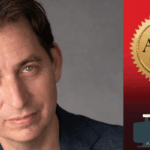Leslie Jamison’s The Recovering: Intoxication and Its Aftermath has sparked some debate about how an addiction memoir should be, with some critics arguing that Jamison’s very long book is too ambitious in its scope, while others (like me) who admire Jamison’s project of weaving her own experience with alcoholism together with other writers’ accounts of addiction, specifically Jean Rhys, Raymond Carver, John Berryman, Malcolm Lowry, and that classic of addiction lit, Junky by William Burroughs. Still, there is a pull to the dark side that makes addiction books so appealing: the benders and giddy highs are literally followed by crushing lows (or hitting bottom), and then by the mundane but crucial business of working through the addiction and building a sober life. Here are a few favorites.
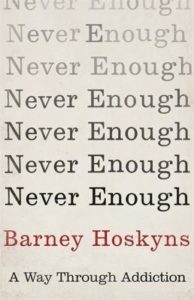
Barney Hoskyns, Never Enough
Hoskyns is best known as a rock critic, the author of many articles for Mojo magazine and books about The Band, Tom Waits, and, tellingly, Hotel California: Singer-Songwriters and Cocaine Cowboys in the L.A. Canyons. His memoir focuses on the five years in his early twenties, after he left Oxford with a first, when he abused heroin and cocaine. What sets Hoskyns’ book apart from a typical addiction memoir is his willingness to do some painful soul searching to find the reasons he started using drugs, what he was running away from: his dependence on drugs freed him from having to make hard decisions about his future. He’s hardly the first writer to compare addiction to romance: both are exercises in which the self willingly submits to an outside force, bringing both pleasure and pain. Yet his slim memoir with its relentless self-exploration is a potent read.
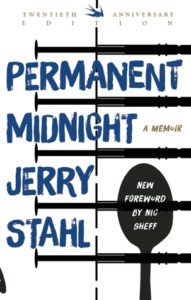
Jerry Stahl, Permanent Midnight
Stahl’s book is a monument to Hollywood excess. Working steadily as a TV writer, most notably for the strange hit 1980s sitcom starring a nasty puppet, Alf, Stahl abused every substance he could get his hands on and yet managed to stay employed and solvent for a remarkable amount of time. Stahl writes: “The point is, everything, bad or good, boils back to the decade on the needle, and the years before that imbibing everything from cocaine to Romilar, pot to percs, LSD to liquid meth and a pharmacy in between: a lifetime spent altering the single niggling fact that to be alive means being conscious. More or less.” This gets to the heart of the addiction memoir: the choice to be alive and conscious rather than impaired by drugs.
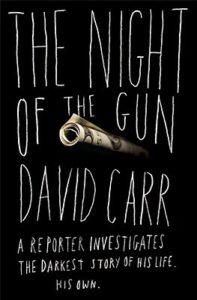
David Carr, The Night of the Gun
Acclaimed New York Times media reporter Carr (who died of cancer in 2015) takes a journalistic approach to reconstructing his struggle with drugs and alcohol when he was a young reporter in Minneapolis and Washington, D.C. He interviews the people who were in his life during his addiction to try and piece together the many days and nights wiped out by drug abuse. “To be an addict is to be something of a cognitive acrobat. You spread versions of yourself around, giving each person the truth he or she needs—you need, actually—to keep them at one remove. How, then, to reassemble that montage of deceit into a truthful past?” Carr asked in his powerful memoir. He does a formidable job of recreating his scheming addict self in order to better understand the sober self he worked so hard to achieve.

Bill Clegg, Portrait of the Addict as a Young Man and Ninety Days
Literary agent Clegg shocked the publishing world with this memoir about his crack addiction. In the height of using, Clegg wrote: “There will never be a time when I smoke crack that doesn’t end with me on my knees, sometimes for hours—hunched over carpets, rugs, linoleum, tile—sifting desperately through lint and cat litter and dirt, fingering the floor, like a madman, for crumbs.” Clegg indulged his habit for the most part in New York City hotel rooms, often inviting male escorts over to indulge with him. After losing his business, his boyfriend, and his apartment Clegg bottoms out. In the sequel of sorts to Portrait, Ninety Days, Clegg describes his life as a newly sober person, going to meetings and trying to avoid his old haunts and triggers. But dealing with addiction is daily battle; as he wrote: “I’m sober enough to show up, addict enough to be asked.”

Edward St. Aubyn, the Patrick Melrose novels
If you’ve never read St. Aubyn’s fantastic Patrick Melrose novels (there are five in total, which move through time as he grows up) now is the time to do so, as the TV version starring Benedict Cumberbach has already aired in the UK and airs in the US on Showtime on May 12. St. Aubyn’s books trace Melrose’s life from living with his rich, terrible parents—dad is actively abusive, mom is a checked out New Ager—to becoming a hardcore drug addict. The passages about scoring and using drugs in the novels are as harrowing as in any memoir, and Melrose’s many attempts to clean himself up are moving and frustrating in equal parts.
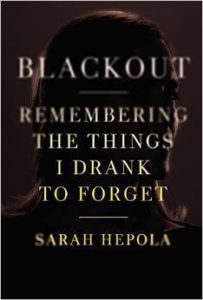
Sarah Hepola, Blackout: Remembering the Things I Drank to Forget
Blackout is part addiction memoir, part mystery, as Hepola’s motive for writing the book is to try and reconstruct the time she lost to drinking. Hepola, who edited personal essays for Salon, really knows how to tell a story. Her years trying to break into writing in New York City are punctuated by six-packs and bottles of wine. Her attempt at a location cure, moving back to her native Dallas, does not initially stop her drinking but it spurs her to examine it, and herself, through the lens of years of heavy drinking. When she gets sober and starts trying to piece together the past, she has to face the insecure, needy, unstable woman she used to be. Blackout is celebratory without being sentimental or rosy: Hepola’s quest to get back her memory sits at a crosswalk with the road to recovery.
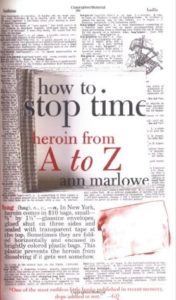
Ann Marlowe, How to Stop Time: Heroin From A to Z
Written as a glossary of sorts—entries include words like nostalgia, power, and office, and misanthropy— Marlowe’s book is a tour through heroin use in the East Village in the 1980s. The conceit of the vocabulary lesson lets Marlowe roam free in the territory of addiction, telling personal stories as well as generalizing about what heroin does to the body, the soul, and the life of the user. Her connections are smart and original, as in this passage from the nostalgia section: “Addiction can show us what is deeply suspect about nostalgia. That drive to return to the past isn’t an innocent one. It’s about stopping your passage to the future, it’s a symptom of fear of death, and the love of predictable experience. And the love of predictable experience, not the drug itself, is the major damage done to heroin users. Not getting on with your life is much more likely than going to the emergency room, and much harder to discern from the inside.”
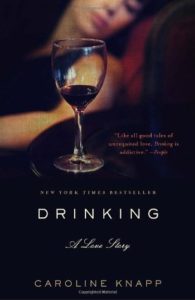
Caroline Knapp, Drinking: A Love Story
Knapp’s memoir of alcoholism is full of insights about the romance and appeal of drinking, as well detailing her own harrowing personal story of hitting bottom and learning to live a sober life. Like Jamison, she’s acutely aware of the alcoholic lineage of writers: “I identified with legions of drinking writers: Carson McCullers, Dylan Thomas, Dorothy Parker, and Thomas Wolfe; Eugene O’Neill, William Faulkner, and F. Scott Fitzgerald; Ernest Hemingway, Theodore Roethke, and Jack London. Drinking seemed like part of the turf to me, and there was a hard-edged glamour to writers like that I found deeply attractive.” Knapp’s affair with drinking is equally hard-edged: she writes unflinchingly about the most harrowing experiences with drinking, and with grace about her recovery.
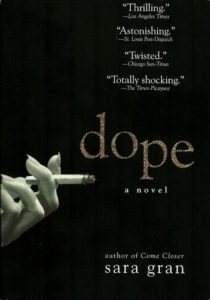
Sara Gran, Dope
Dope is one of those short noir gems of a novel, like James Sallis’s Drive or Charles Willeford’s Pick-Up. The plot is straightforward: in 1950s New York City, a wealthy Long Island couple hires former dope addict Josephine (Joe or Joey to her friends) to try and find their wayward, dope-addicted daughter. As Joe, now a petty thief, makes the rounds of the shooting galleries, bars, and dealers from her former life, she confronts her old demons and some real scumbags. What exalts Dope is Gran’s spare, perfect prose, which provides the perfect vehicle for Joey’s ruminations on heroin: “Every junkie in New York, probably every addict in the world, could step into the conversation at any point and join in. There were a thousand and one topics, but they were all one topic: dope.”
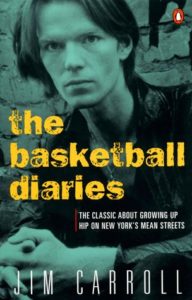
Jim Carroll, The Basketball Diaries
Jim Carroll’s classic memoir, set in New York City in the mid-1960s, transpires while the author is 12 to 15-years-old. Carroll’s drug of choice is cough syrup with codeine, and when he’s not getting high he’s hustling, playing basketball, and running wild around the city. This is a coming-of-age book as much as a drug one, and demonstrates how Carroll, later a punk and the front man for The Jim Carroll Band, learned how to navigate both life and the city, both relentless and in a state of constant evolution.
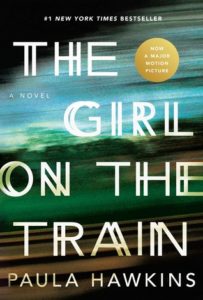
Paula Hawkins, The Girl on the Train
At the heart of Paula Hawkins’s blockbuster mystery is the drinking problem of her protagonist, Rachel, an active alcoholic who thinks she witnesses a murder while riding the commuter train to London. But Rachel is not sure if she can trust her eyes: she’s drinking so much she blacks out most nights and has exercised some questionable judgment by doing low-level stalking of her ex-husband and his new family. As Rachel delves deeper into the mysterious murder, she has to face up to her alcoholism: no one will believe her report of the crime as long as she’s a falling down drunk.
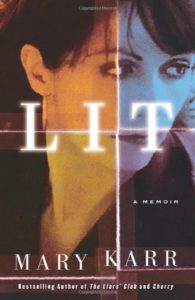
Mary Karr, Lit
Coming on the heels of her two outstanding memoirs The Liar’s Club and Cherry, in which she chronicles her harrowing childhood and the drinking problems of both her parents. Lit is about Karr’s own drinking and how it impacts her family, particularly her son. Karr writes in the opening of her memoir, “That’s the story I want to tell: how I started getting drunk. How being drunk got increasingly hard, and being not drunk felt impossible. In Odyssean terms, I’d wanted to be a hero, but wound up—as Mother did—a monster.” Lit describes in detail how Karr stopped being a drunk, or a monster, and became a person who could manage her life and raise her son.












